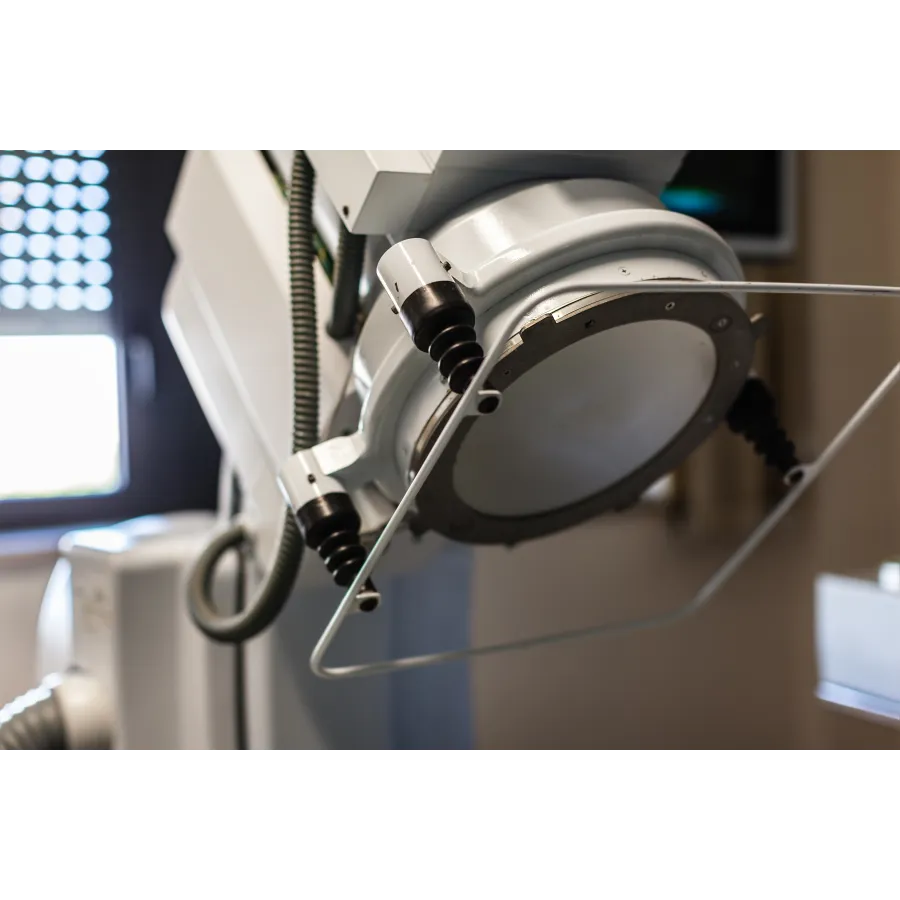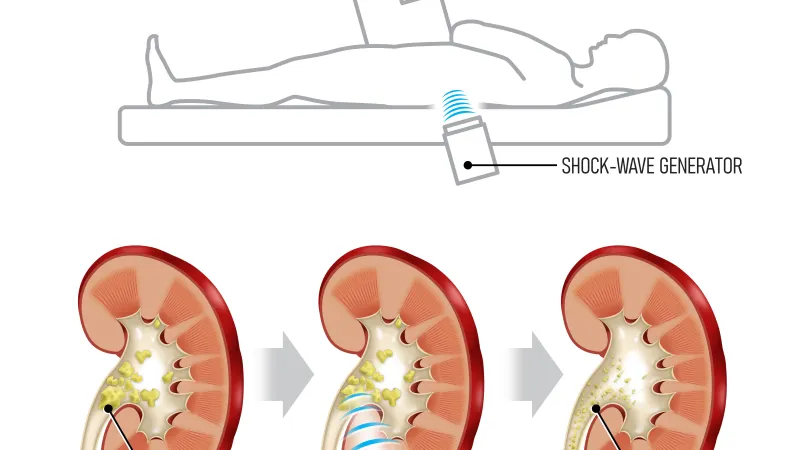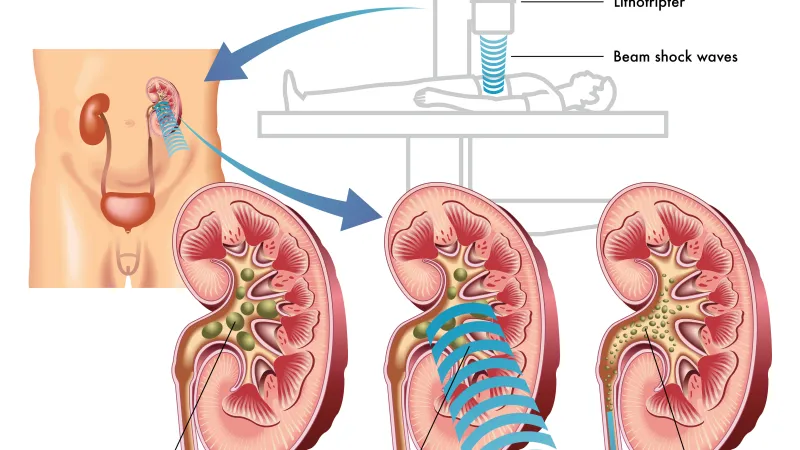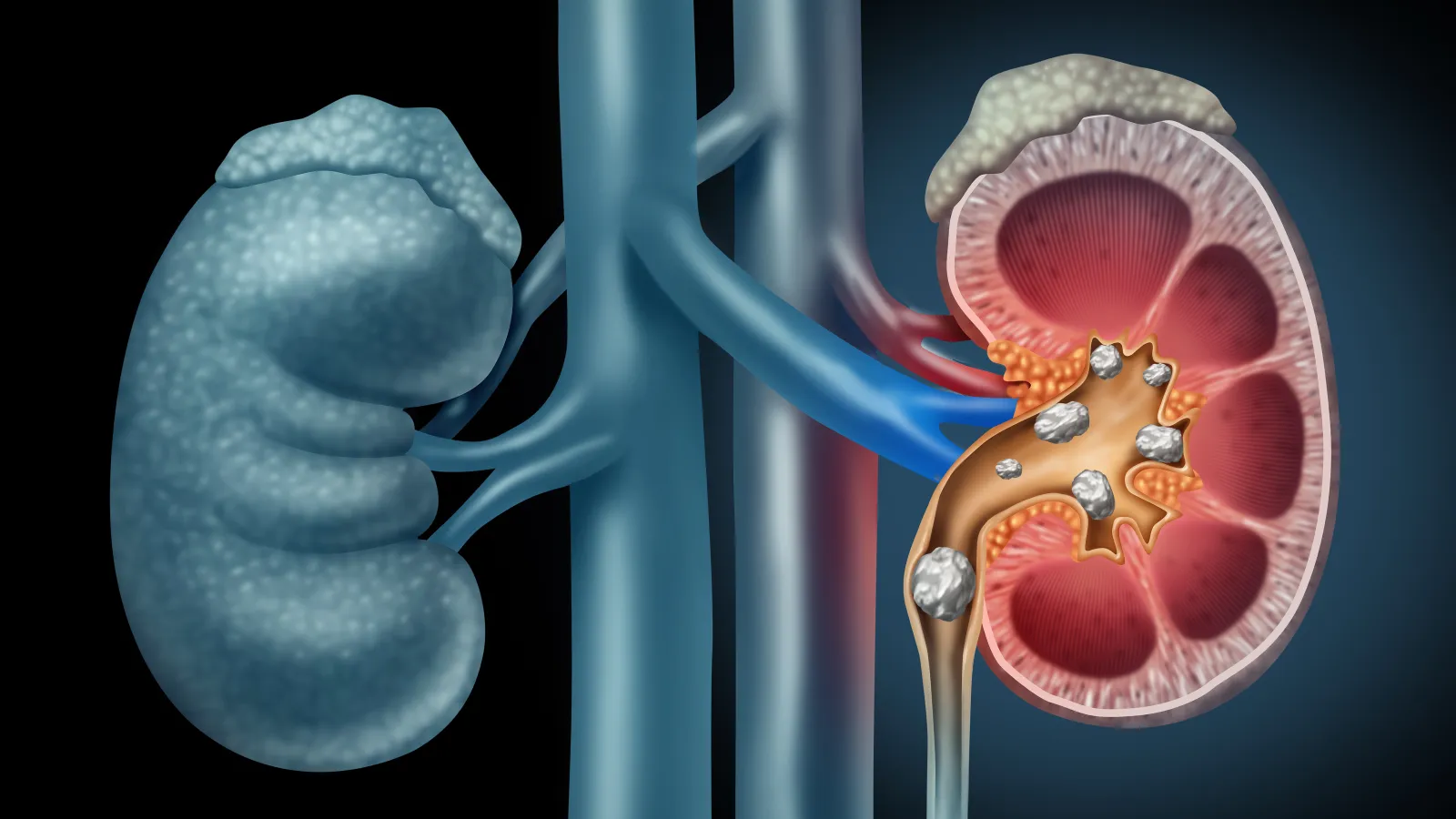Extracorporeal Shock Wave Lithotripsy (ESWL) in Atlanta
What is Extracorporeal Shock Wave Lithotripsy (ESWL)?
Extracorporeal Shock Wave Lithotripsy is a state-of-the-art procedure designed to break up stones in the urinary system using shock waves generated by a device called a lithotripter. These shock waves are directed at the stones with the help of X-ray imaging to ensure precision. The goal is to break the stones into smaller pieces that can be passed naturally or extracted more easily.


Who Should
Consider ESWL?
ESWL can be an excellent option for many people, but it's important to understand that it may not be effective for everyone. Several factors can impact the success of the procedure:
- Stone Composition: Certain stones, such as those made of cystine or certain types of calcium, may not break up easily with shock waves.
- Stone Location: Stones located in narrow ducts may still have difficulty passing, even after being broken up.
- Stone Size: Larger stones may create big fragments, which can be harder to pass or remove.
- Preexisting Conditions: Chronic infections or other medical conditions may reduce the effectiveness of ESWL.

Who Should
Avoid ESWL?
- Individuals with chronic kidney infections, as stone fragments may harbor bacteria.
- People with blockages or scar tissue in the ureter, which could prevent fragments from passing.
ESWL is generally performed in an outpatient setting, allowing patients to return home the same day. A mild anesthetic is used to numb the treatment area, making the procedure painless.
ESWL For
Kidney Stones
ESWL has revolutionized the treatment of kidney stones, making it possible for many people to avoid major surgery. It is the most common non-invasive treatment for smaller kidney stones that are easily detected with X-ray imaging.
Risks And
Complications Of ESWL
While ESWL is considered safe, certain individuals may be at a higher risk of complications. ESWL is not recommended for:
- Pregnant women
- Patients with pacemakers or other implanted devices
- Individuals taking blood thinners or those with bleeding disorders (you'll need to stop these medications at least a week prior)
- People needing immediate and complete stone removal, which ESWL cannot always guarantee
Despite these risks, ESWL remains a preferred treatment for kidney stones due to its non-invasive nature and high success rate.

Why Choose ESWL?
ESWL offers a safe, effective, and non-invasive solution for treating urinary stones. With smaller incisions, minimal recovery time, and outpatient treatment, ESWL has become the leading option for many patients seeking relief from stones without the need for surgery.



